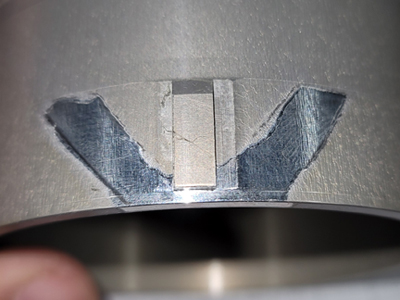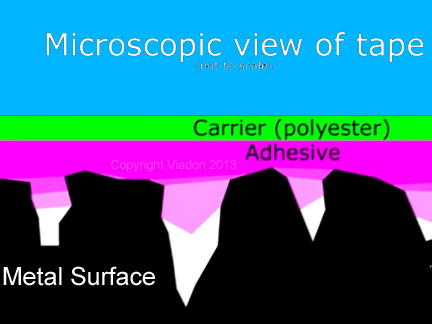The critical anodizing masking tape technique
Why using masking tape in anodizing requires a different twist
Most other finishing processes are similar in concept: A layer of a wet or dry material is applied on the surface of a part, then it dries or is cured, adding to the thickness of the part overall. When an area needs to be kept free of said coating, a plug, cap or tape is applied, then removed after drying/curing. The area adjacent to the tape, cap or plug has a sharp cut off line where coating is masked off.
Anodizing, as you likely already know if you’re an aluminum or titanium anodizer, is a bit different in that respect. For those who are unaware, the anodizing process essentially speeds up the oxidation of the surface of aluminum or titanium. Because of this, it makes the part slightly smaller – and importantly, it physically alters the surface of the part, rather than adding a coating to the top.
How does this affect masking? For tape, in a specific way with regards to applying the tape.
 In many cases, in particular Type 2 anodizing, a dye is added during the process. This colors the part. But because the surface of the part is physically changing during the anodizing process, masking tape doesn’t function quite as adequately – well, immediately after tape application anyway. That’s because the adhesive is now touching a surface that will be altered at the microscopic level in the anodizing tanks.
In many cases, in particular Type 2 anodizing, a dye is added during the process. This colors the part. But because the surface of the part is physically changing during the anodizing process, masking tape doesn’t function quite as adequately – well, immediately after tape application anyway. That’s because the adhesive is now touching a surface that will be altered at the microscopic level in the anodizing tanks.
What can go wrong? A lot - if the tape is applied and then immediately introduced to the anodizing process, say in an hour or two. This can cause jagged or uneven lines where the tape meets the anodized area. See image here on the right ---->
Why does this happen? And what can be done to prevent it? It helps to understand a bit about how tape works to solve the anodizing / tape masking problem.
Most masking tapes for the metal finishing industry have adhesive that are called pressure sensitive adhesive systems, or PSA's. That means pretty much exactly what it says: Pressure is required to fully activate the adhesive, so that it will start and continue to flow over time into the microscopic crevices of a part.
Did you see that one phrase? “Flow over time”? That’s the key here.
While not ideal for short lead times, it is necessary for anodizers to allow enough time for the adhesive to flow out. Because when that occurs, it creates better “stop off” along the edge of the tape where the areas to be anodized meets the surface to be masked.
 How long is “long enough”?
How long is “long enough”?
Ideally, 24 hours. Minimum? Probably 4 to 6 hours, though that’s unlikely to get the best results. Many anodizers will mask parts one day, then anodize the following day. That tends to net at least 12+ hours of dwell time for the tape adhesive to flow out properly and achieve good anodizing masking stop off. Imagine that the lighter pink "adhesive" in the image at right is the "flowed out over time" adhesive - note it is deeper into the crevices of the metal, creating better stop off.
And how much pressure is needed? Well, you don't need to drive a truck over the tape on the part. But it does require some moderate "pushing down" to get that adhesive flowing. There are various ways to ensure good pressure is applied – some anodizers use a rubber roller, others may have masking personnel go over a part carefully with gloves applying moderate pressure, and still others may use a plastic tool to “swipe” over the surface, particularly the edges of the tape. Maybe you have an idea that works best for your needs. Experiment! See what works best for your process.
However it is accomplished, just remember that pressure and time are the keys to anodizing masking tape success.
Viadon slits tape to width and die cuts several tapes to size that are anodizing masking materials and sends free samples for testing, including:
We also stock anodizing caps and plugs.
If you have questions about masking for anodizing or need tapes, caps or plugs for the process, send us an email, give us a call or check out our full line of masking products here at Viadon.com.
Viadon. A cut above.